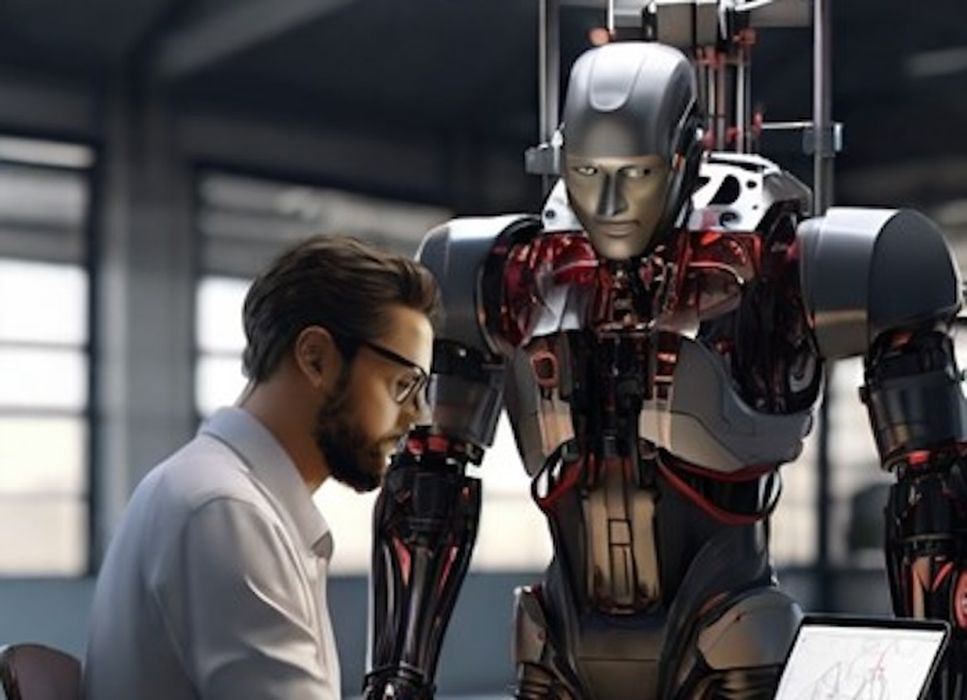
Moribund software about to get an innovation boost from the AI tsunami.
In the early 2010s, CAD was approaching the ripe old age of 501. Everyone was calling CAD a “mature” product that was leveling off in capability, ostensibly having done all it could.
Wait a minute, demanded Jim Heppelmann at PTC’s annual user meeting in 2011, then only nine months as CEO. “Have all the problems been solved?” he asked rhetorically. “These products are fundamentally hard to use.”
“Once upon a time, we were the innovators,” added Heppelmann. “Somewhere along the way, we became complacent.”
Despite Heppelmann’s admonishment almost 13 years ago, CAD companies continued in their complacency. CAD programs were referred to as “mature,” implying little room for improvement. Users, media, and analysts took up the refrain. That CAD was done was easy to believe. After all, hadn’t all the ways to make a circle, a cylinder, and so on, already been defined? The developers were out of ideas. The users, comfortable with a program that had taken years to master, didn’t want to learn anything more. The media, having little to note in each new release, agreed. CAD had indeed matured.
Jim Heppelmann has since left the CEO position. CAD remains hard to use and for over 20 years, there has been little innovation. Only one company (Shapr3D) has tried to make CAD easier to use but they are an exception. Every major CAD program appears to be content coasting along.
A little history on computer tools
Watching Shapr3D being used in expert hands with a pen and tablet makes one wonder why we still use keyboards and mice.
The mouse was suggested as a way to move around on the screen in the 1960s. There were no touchscreens then.
The QWERTY keyboard is an even better example of how we cling to things we should drop. Some of the keys on the QWERTY keyboard are where they are to separate letters in common pairings (“th” for example) so that the mechanical strikers next to each other wouldn’t jam. Separating them on the keyboard avoided the jamming — and slowed the typist. The weak left pinky finger would seldom be called on for the letter Q. The placement of some other keys seems random. An alphabetical arrangement would seem more reasonable. The Dvorak keyboard invented in 1932 minimizes finger movement and places oft-used keys on the home row but it never caught on. Most keyboards don’t include a numeric keypad — a gross oversight for users in professions (engineering, accounting, for example). But even with the advent of electric typewriters that no longer needed strong fingers and the IBM Selectric that replaced the striker bar altogether, it’s still the QWERTY keyboard that produces almost all of the words one reads — including these.
CAD’s failed promise
From the early days of CAD to now, we must ask if CAD is living up to the promise of computer-aideddesign. Despite the CAD revolution spurred by AutoCAD and the MCAD revolution by SolidWorks, CAD remains a manual process that merely details a design a designer or engineer has already conceived rather than helping conceive it.
For 50 years, CAD’s lack of ease of use has suited us just fine. CAD is as easy for those who know how to use it as is the QWERTY keyboard. Others will have to pay their dues. CAD’s promise to help engineers design has been forgotten, its failure to do so, forgiven.
CAD companies may beg to differ. Didn’t they try to help users design — and wasn’t it the users who rejected the offer? Remember the low rate of adoption for generative design and topology optimization?
We do. Generative design really wasn’t all that helpful. Getting an optimum within a design envelope with the minimum mass was a great concept, but in practice, we only saw useless parts produced. Plus, it wasn’t easy to set up and run. You had to be an analyst to use it. Nice try, guys.
Users shouldn’t blame CAD companies for trying. Technology companies and their programmers can see only from afar what manufacturers and their engineers are doing on their desktops. This has led to the development of technologies offered with little no or slow acceptance (cloud, for example was pushed before users were ready), AR and VR (“you will no longer need to do in person design reviews”), 3D printing, digital twins, to name a few technologies no user asked for.
More than one software product manager questioned on the need for these and other reluctantly adopted technologies getting little traction have quoted Henry Ford who said “If we listened to what the people wanted, we would’ve built a faster horse.” They have a point.
Most users are loathe to take the initiative in suggesting new software technologies because most don’t want to learn a new system all over again. In all fairness to users, they may not trust software companies to deliver a satisfactorily easy-to-use solution. Generative design is again a case in point. Users in industries in which lightweighting is important longed for a way minimize weight without FEA reiterations. However, totally automating the process, delivering a spindly part that could be dismissed on sight and calling it a “solution” was a little conceited.
Imagine a recent graduate redesigning a part and presenting it at a design review to senior engineers. The recent graduate focuses on a single variable, weight. The veteran engineers who considered everything, such as worst-case loads, available materials, manufacturing process, etc., look at each other.
“Nice try, kid,” says the senior engineer finally. The engineers file out of the room.
Read the rest of this story at ENGINEERING.com
